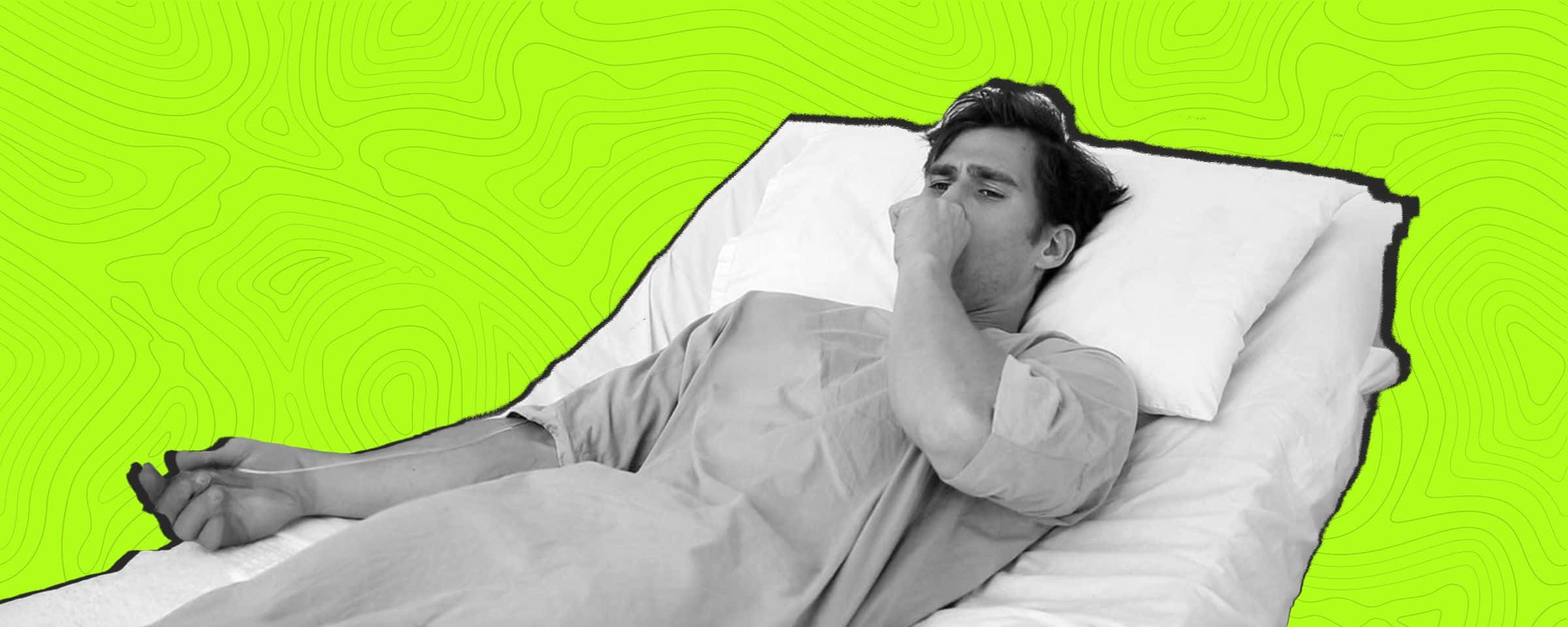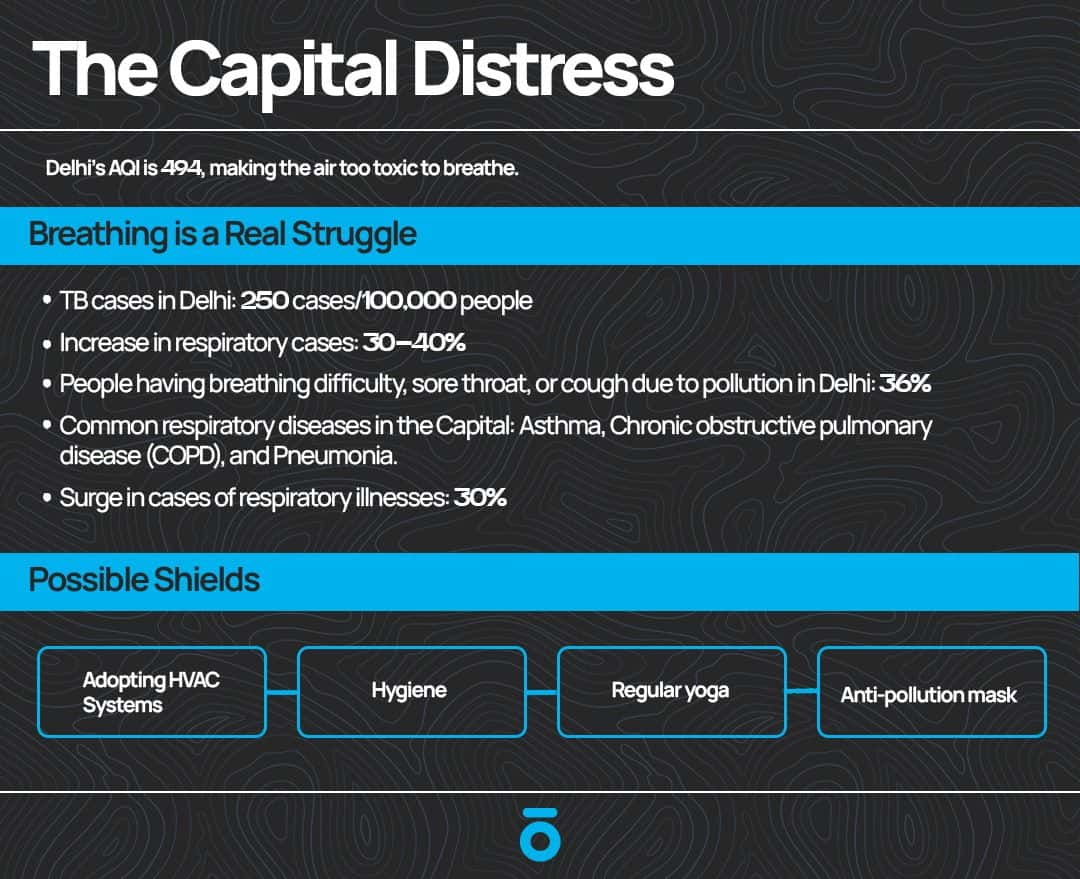Airborne Diseases: How to Stay Safe and Protect Your Health

Introduction
Every breath you take, every cough you fake, every move you make - straight to Safdarjung Hospital. Delhi, I am watching you. The air is so bad even the Police have lost their Sting (IYKYK). Such is the AQI in Delhi.
The Indian capital is a veritable gas chamber right now, as some locations have recorded an AQI of over 900. For the past 30 days, the lowest the AQI has dropped in Delhi was 177, which also feels like a distant past. Despite a legitimate scare of suffocation, another demon lurking underneath the sheet of smog is Airborne Disease.
Thanks to COVID, we all started getting paranoid, wearing masks, and becoming more touchy about who touched us or who sneezed on us. Airborne diseases are unpredictable. Like the stock market. Except that there are no dividends. Only common diseases.
Airborne Disease Transmission - Watered Down!
Cough, sneeze or talk. If it's in you, it'll soon be all over the place. When you take a breath, short or long, they enter your diaphragm and implant roots inside you. Air transmission means these diseases travel through the air to get to you. Chickenpox, the common cold, Covid 19 - the list is endless. In the current air quality, even existing might give you one disease or the other.
Causes of Airborne Diseases
A litany of microorganisms causes airborne pathogens to spread from one person to another. These agents are primarily of five types.
Viruses
These microscopic organisms, which can infect hosts like plants, animals, or humans, are nothing but a small piece of genetic information (RNA or DNA) inside a protective shell (capsid). Some even come with an envelope.
Bacteria
Ubiquitous and free-living, these organisms have one biological cell. Bacteria can be good or bad, depending on what you're looking at.
Fungi
Fungi are members of the eukaryotic organism group that includes microorganisms such as yeasts and moulds, as well as the more well-known mushrooms. Such organisms belong to one of the traditional eukaryotic kingdoms: Animalia, Plantae, Protozoa, Protista, or Chromista.
Protozoa
Protozoa is a polyphyletic group of single-cell eukaryotes that may be either free-living or parasitic and feast on organic matter, such as other microorganisms or organic debris.
Worms
Yuck, right? Worms refer to different distantly related bilateral animals with long cylindrical tube-like bodies devoid of limbs or eyes.

Types of Airborne Diseases
1. COVID-19
It came, it saw, it killed. Widely known and responsible for millions of deaths and infections worldwide, this virus can act like an airborne disease in most situations, such as clinical settings during medical treatment. The size of these droplets is more than what is considered airborne. This infectious disease is caused by the SARS-CoV-2 virus.
Despite airborne precautions in hospitals, COVID-19 has managed to infiltrate at ease on multiple occasions. If an outbreak even close to 2020 takes place in Delhi now, the situation will go south faster than you can read this blog.
2. Influenza
You've probably caught this a million times but don't even know its name. Flu symptoms change depending on the stage. Your body has a tough time building immunity. The flu gives you chills, fever, cough, muscle aches, congestion, runny nose, fatigue, and headache.
A virus causes this flu. Don't mistake this for the 'stomach flu' caused by viruses that cause vomiting and diarrhoea. If you have the flu, you recover on your own.
3. Cold
Everybody catches the common cold at some point in their lives. Although it is highly contagious, it is quite harmless and goes away within a week or two. Antibiotics are useless here because colds are caused by viruses, not bacteria.
4. Chickenpox
Classic chickenpox is a rash that turns into itchy, pus-filled blisters that convert into scabs. The rash shows up on the chest, face and back before spreading to other body parts. It lasts for around four to seven days. You are safe if you have had chickenpox once or have been vaccinated against it.
5. Mumps
Mumps are quite common in many countries, and you must get vaccinated to protect yourself. People who get mumps recover within a fortnight. If you catch this, you don't get sick right away; rather, you take around two to four weeks to show any sign of infection.
Common signs of mumps include a tender, swollen jaw and puffy cheeks caused by the swollen salivary glands under one or two ears. If things become serious, then your brain gets inflamed.
6. Measles
This highly contagious disease is caused by a virus. It spreads because of infectious persons breathing, coughing and sneezing. It infects the respiratory tract and spreads through the body, giving you symptoms like a high fever, runny nose, cough and a rash throughout.
7. Diphtheria
This highly contagious disease results from toxin-causing bacteria, which can transfer from one person to another when an infected person sneezes or coughs. Certain people may not develop disease manifestations; however, they can still transfer these illnesses to others.
Others will develop mild symptoms even though severe disease, complications and even death can happen. Diphtheria damages the respiratory tract and can spread through the body. Symptoms include fever, swelling of the neck glands and sore throat.
8. Whooping Cough
Also known as pertussis, this respiratory infection causes violent and rapid coughing fits, which can make you cough so hard that you puke. The name of this disease is because of the whooping noise you make when you attempt to breathe after coughing. It spreads through coughing, sneezing, or breathing close to someone.
9. Tuberculosis
Tuberculosis is caused by bacteria that affect the lungs and spreads through the air when people with TB cough, spit or sneeze. In certain nations, children are inoculated with the BCG vaccine to prevent TB.

Conclusion
In conclusion, Delhi's polluted atmosphere might cause any of the above diseases. If you develop symptoms, visit your doctor or get an ENT test done, which will tell you what is wrong with you. To prevent airborne diseases, speak to your doctor. The AQI in Delhi is extremely unfavourable, so make sure you mask up when you leave the house.
Respiratory illnesses, ranging from common colds to influenza, are a global health concern. Awareness, prevention, and timely medical intervention are the keys to survival. Whether you want to protect yourself or a loved one, stay informed and proactive to safeguard your respiratory well-being. Stay well, breathe easy, and stay away from respiratory illnesses.






